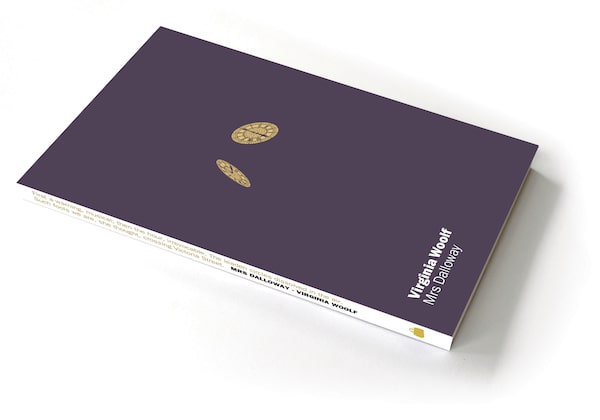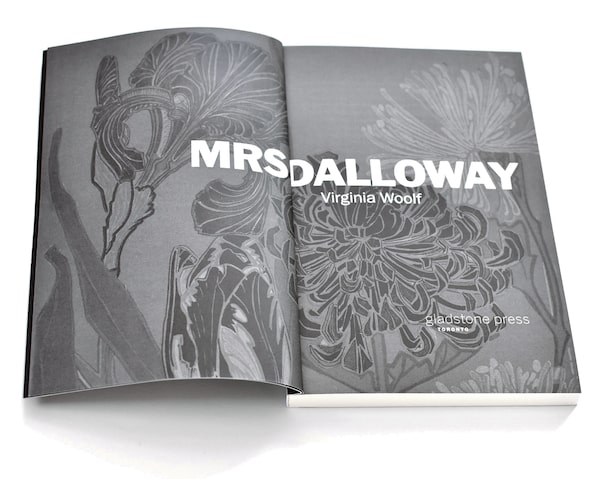A facsimile of Virginia Woolf’s handwritten Mrs. Dalloway manuscript draft – complete with substantive revisions, alternate novel opening and ending written in the author’s signature purple ink – was published in June for the first time. It’s canny timing, because in recent years, a grassroots movement has also begun to observe an annual Dalloway Day in the same month, as a tribute to the prolific writer of essays, criticism and novels.
Since her death in 1941, Woolf’s legacy has moved beyond literary circles into popular culture, from memoirs (Katharine Smyth’s All the Lives We Ever Lived) and even menopause self-help books (What Would Virginia Woolf Do?) to Hollywood movies such as The Hours. In the sharp new comedy Booksmart, a handwritten sign on a teenage girl’s bedroom door proclaims “A room of one’s own.” It’s equal parts warning and anthem, and a fitting detail for an ambitious high-school senior: The powerful essay of that name by Virginia Woolf is one of the great proto-feminist polemics.

INGRID PAULSON/Handout

INGRID PAULSON/Handout
Celebrations of Dalloway Day include an evening discussion at the British Library (this year, between authors Monica Ali, Olivia Laing and Elif Shafak), as well as a reading at The Second Shelf, the new Soho bookshop dedicated to rare and collectible books by women. Named for author Meg Wolitzer’s provocative 2012 essay on the persistent gender hierarchy in the book trade, the shop is one facet of a larger project by writer and bookseller Allison Devers to highlight the works of women and promote gender equality in the literary canon, past and present.
Woolf is one of the most collectible writers today, Devers says, but it wasn’t always so. “The current demand for her books and work speaks to an important recognition and valuation that very few modern women writers have received in rare books,” she explains. “Our literary heritage and culture is still predominately focused on celebrating men.” Most of the writers’ houses that are popular tourist destinations are houses famous for famous male writers, Devers adds, as are occasions such as Bloomsday and Burns Night. Most of the blue heritage plaques on buildings around London that feature writers, artists and other acclaimed local citizens commemorate the lives of men, “so of course we need to start carving out space and places for the celebration of women writers. And Woolf’s Mrs. Dalloway is every bit as worthy and perfect of celebration and acknowledgment.”
“Woolf’s place in the larger canon is that she wears many different hats, and she has many roles to play simultaneously,” says Elicia Clements, associate professor of humanities and English at York University and the author of the new book Virginia Woolf: Music, Sound & Language (University of Toronto Press). “She’s one of the greatest novelists, one of the mothers of feminism, she’s a high modernist innovator of form, she’s a literary critic.”
Author Virginia Woolf.The Associated Press
For decades, a day has already been observed in honour of Woolf’s contemporary James Joyce; Bloomsday, named after Ulysses character Leopold Bloom, recreates the fictional walk in Dublin every year on June 16. Likewise, Dalloway Day features a tribute walk that recreates the itinerary of the titular hostess around London on errands leading up to her evening party; the date, however, cannot be pinned down. In the text it’s simply on a vague day in mid-June and its observation is similarly fluid.
“It’s actually very Woolfian that there is no specific day – it’s perfect,” Clements says. “She was very interested in troubling fixed meaning, which is very different from Joyce, who is very invested in a specific day, very specifically June 16th. You cannot escape that, in Ulysses, it’s very much about him, about Joyce, Joyce, Joyce.”
“Woolf is at the opposite end of the spectrum,” she adds. “She’s much more interested in the common reader.” Clements also likes the idea of recreating the walk (“I’ve done my own little version”) because the different routes chosen by each character are significant, and are a meaningful structuring component that provides additional insight.
“I love walking in London,” are the first words Clarissa Dalloway speaks in the novel, as Lauren Elkin reminds us in Flâneuse, her invigorating book about wandering women. She also points out how in Mrs. Dalloway and essays such as Street Haunting, the author thought deeply about the relationship between women, the act of walking and the politics of the city. “Woolf mined the streets for drama, filling her books with the people she observed,” Elkin writes, “walking, shopping, working, pausing. Especially the women.”
It’s a short step from private spaces, to tribute walk, to women’s march. “In our moment, and given the threat of backsliding of women’s rights that we have already seen, creating these public events is essential and necessary,” Canadian author and cultural-studies scholar Sanita Fejzic says of Dalloway Day.
Fejzic is a presenter at the International Woolf Conference with “Killing the Angel of the House,” a chapter from her manuscript-in-progress that updates and speaks back to Woolf’s most famous essay. “The big villain of A Room of One’s Own is patriarchy; she is very adamant and explicit about that,” Fejzic explains. "She goes through the history of women, child-bearing and forced into child-caring, into being ‘the angel of the house’ – she wants women to have their own money, financial independence and privacy.”
“I think that if Woolf were alive today, she’d say it’s not enough to kill the angel of the house,” Fejzic continues. “We do, but we also have to deal with the neo-liberal mode of living, the capitalist way of living. There’s been a lot of progress and things have changed considerably in the 90 years since she wrote that. We find ourselves at a time when we have multiple great villains, including a mode of living that’s completely unsustainable and killing the planet.”
“It’s about reclaiming of who counts as a mother – Mother Earth, intellectual surrogate mothers like Virginia Woolf, and what kind of room in the public sphere do we make for her and for them,” she adds. “I come from Bosnia, I am a Muslim. What kinds of rooms are being made for Muslim women in the West today?”
Like many writers, Fejzic says Woolf influenced her both emotionally and intellectually. "I can chart the trajectory of my own coming into of age by when I read A Room of One’s Own as a young adult in my 20s.”
The history of most women is “hidden either by silence, or by flourishes and ornaments that amount to silence,” Woolf wrote.
“Her vision, especially at the end of A Room,” Clements adds, “was to the women who were in the audience to go out and write, go out and read – go out and do it yourself. And that is very inspiring.”
Expand your mind and build your reading list with the Books newsletter. Sign up today.